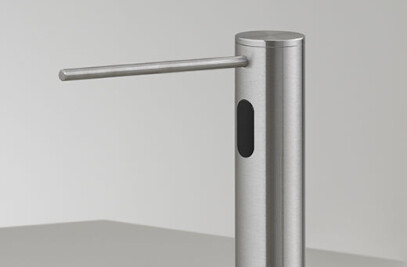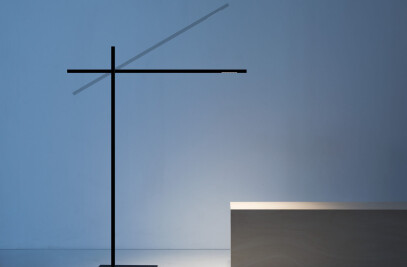Inspired by Philip Johnson's Glass House, the building was born from the ruins of a rustic house on the Biellese hills
Conceived with a minimal-naturalist approach, Teca House is a contemporary building born from a professional friendship between Federico Delrosso, Milanese architect and designer of Biellese origins, and the client, Alberto Savio, textile entrepreneur of the area.
The project, which consists of the recovery of a small rustic building in a splendid setting of the hills of Biella, is based on a compositional inversion intervention, which leads to the outside, dematerializing it, a small pre-existing rustic volume giving life to a new function in the area. From the "roots" of an agricultural past, now in disuse, signs of which are maintained, a contemporary work is born, rooted in the territory and in balance with it, but at the same time permeated with new possibilities of use.
The building, which takes inspiration from Philip Johnson's Glass House, has an area of about 80 square meters which extends by another 50 by opening the sliding glass walls that surround the volume. The flexibility of the project makes this space ideal for meetings or hosting a business cocktail, but it is also an intimate refuge for reading or practicing yoga. It can also become a guesthouse for occasional guests of the landlord and his wife who live nearby, in a villa located at the foot of the hill. Teca House was conceived as a precious cultural container, a landmark to create new possibilities of a relationship with the Biella area.
“In this project, the display case holds the man and his emotions. A privileged and poetic point of view, a total immersion in nature, almost as if the user were suspended in the void. At the same time, it works in negative: glance is raised from inside to outside, indicating human being centrality”. declaresFederico Delrosso.
The relationship between the past and the present and the "opera" and context is balanced without altering the dimensional equilibrium of the site and enhancing the environmental value and becoming not only cultural but also a visual reference. The rural wall system becomes the base, the connection with the territory from which the new intervention is born, light and transparent: a structure in concrete that opens towards the landscape with two large horizontal wings and a completely openable glass layer that contains the volume.
The architectural system was created in the favor of correct solar contributions: the shape of the floors that extend beyond the glass case are designed to protect against summer solar radiation, favoring instead the winter one.
In addition to the recovery of the original stone from the rustic, sustainable materials have been used and left unfinished, such as the concrete for the structure and floors and the birch plywood for furnishings and coverings.
The sophisticated architectural and structural solutions, although not visible externally, have made it possible to integrate the building with high performing solutions and materials aimed at eliminating and correcting thermal bridges. The plant engineering alongside the insulation measures bring the building to energy class A4. The realization of an air heat pump single energy air conditioning system combined with radiant floor systems, and fan coils, the VMC system and the high-performance photovoltaic system, guarantee environmental comfort, throughout the year and with any external climatic conditions.
"When i purchased the small ruin and the ground where now rests the Teca House, i had no idea what it could have become.” Says Alberto Savio.“The confrontation with Federico Delrosso, with whom i hold a sincere professional and friendly relationship, his vision on architecture and the role that it can and must have, fascinated and pursued me to take the opportunity that this place had to offer: to be able to leave a sign that remained beyond my time and my family. With this sensibility i welcomed the project proposals. It was a challenge to accompany the creative process of federico: behind every detail there are drawings, thoughts, solutions discarded in favor of what has been realized. A correct, honest and astute approach. A great attention given to landscape, spaces, materials, and finishes. A sign becomes a dream”.
Project "Teca House" was presented at the "Time space existence" exhibition at Palazzo Mora, set up on the occasion of the XXVI Architecture Biennale in Venice 2018 and is the protagonist of the film on Federico Delrosso "Dreaming the Real" directed by Luca De Santis and curated by Davide Giannella, and presented at MDFF 2018.
Material Used :
1. Furniture and upholstery: Henrytimi
2. Kitchen and metalwork: Niva Architectural Elements
3. Lighting: Davide groppi
4. Faucet: Cea Design



































